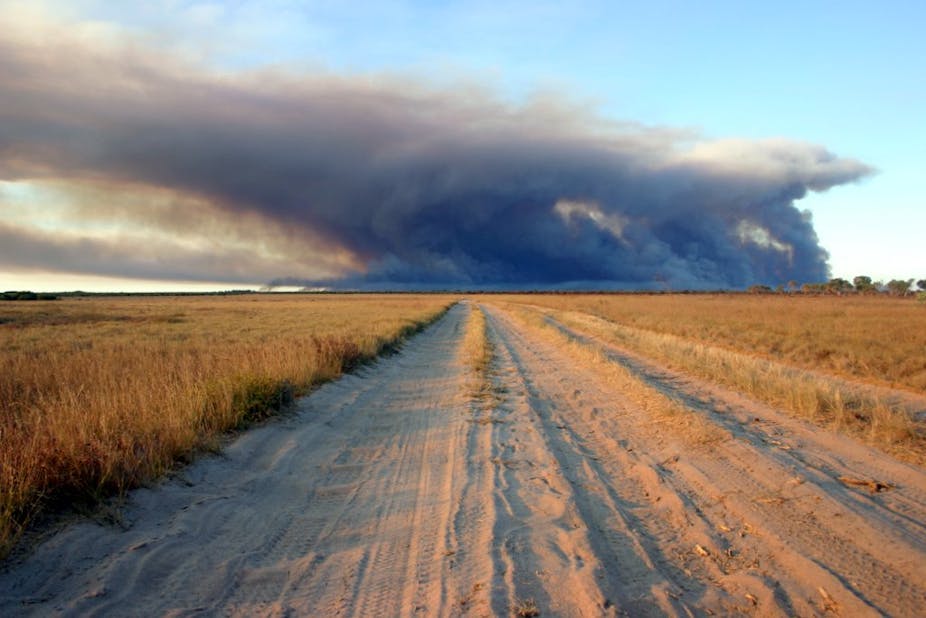Looking back over recent years, it is possible to trace a shifting focus of scientific and political attention in the debate on climate change.
First, we identified human-induced forcing of climate change, and the likely impacts of these changes. Institutions responded by focussing on the mitigation of greenhouse gas emissions.
However, there is now increasing realisation that we will have to adapt to some level of climate change no matter how effective mitigation efforts are (or are not). Society needs to plan for climatic change that cannot be stopped.
Due to the complexity of adaptation, and its diffuse nature, a new type of response is needed.
Why mitigation and adaptation need different approaches
Mitigation and adaptation are often seen as two sides of the climate change coin. But they do have different agendas.
Mitigation needs collective action with global consequences (for example, the reduction of greenhouse gases in the atmosphere). We won’t see the results until much later.
Adaptation on the other hand is much more local (that is, people and natural systems need to adapt differently in different locations). In many instances, the results will be much more immediate.
Mitigation’s agenda is much more sharply defined than adaptation’s, thanks to identifiable energy sources and uses, and the imposition of emission reduction targets.
Adaptation has a much higher level of institutional complexity: a broad range of organisations and individuals need to be involved.
This could get a little complicated
So why is adaptation such a complex issue? There are the more obvious head-aches: uncertainties in climate model data, the wide range of people and things that may be affected, and the differing sensitivities of these different “elements at risk”.
But what’s more, adaptation responses need to be context (and often location) specific. To address climate risks we have to consider not only different climate hazards (and combinations thereof) which may affect a locality but also exposure and vulnerability to each hazard.
Complicating things further, our ability to cope with, or respond to, the impacts of climate change and variability will also be affected by a host of localised and personal influences.
Whose responsibility is this?
So what are we trying to adapt to? Who or what needs to adapt? How should adaptation occur? What metrics are available to measure “good” adaptation? These are all challenging questions for those responsible for action.
While an “enabling” policy environment is needed at the Federal level, the local nature of climate impacts (and associated adaptation responses) means these responsibilities are increasingly being devolved to State and local levels.
We can already see this decentralisation in Australia. States and territories have to prepare state-wide strategies and local authorities being encouraged to develop their own adaptation plans.
In Victoria, the Victorian Centre for Climate Change Adaptation Research (VCCCAR) is supporting policy making. It undertakes multi-disciplinary and multi-institutional research projects guided by regional priorities, as identified by State Government departments.
We’re learning, but we still have a long way to go
So what can we learn from early endeavours to understand current and future climate impacts? What about from the efforts to help local communities respond?
One obvious development has been the widespread uptake of risk assessments by local authorities. This has been a direct consequence of guidance and financial incentives provided by the Federal government.
While this is encouraging in some respects, it also warrants a closer look at the methods applied and the reasons for focusing on risk assessments, as opposed to other types of climate change assessment.
As argued by the authors in a recent working paper for the ‘Framing Adaptation in the Victorian context’ project, the choice of any assessment process may well lead to different adaptation pathways.
“Top-down” expert-driven assessments can be well suited to organisational risk management. But they are arguably of less value to community-wide adaptation planning.
On the other hand, “bottom-up” vulnerability assessments (characterised by greater stakeholder engagement and the incorporation of local knowledge) may result in different outcomes. This is because different voices get heard. The importance of local concerns and narratives should not be underestimated.
Experts alone can’t do this for us
In many Australian instances, local authorities have lacked the resources or in-house expertise necessary to carry out climate risk assessments. To date, they have tended to rely on outside consultants to undertake the necessary work.
This expert-driven “one-off” approach can work well when it’s supporting mitigation activity, such as accounting for greenhouse gas emissions. But it is less well-suited for dealing with the complexity of climate risks and exploring how best to adapt.
Instead, what is needed is a longer-term process of “learning to adapt”. This is an iterative engagement process focused on building local government capacity. It involves longer-term and more substantial relationships between policy-makers, scientists, and wider stakeholder communities. It can lead to the realisation of mutual benefits and a joint advancement of adaptation knowledge and expertise.
It is important to recognise at this early juncture that mitigation and adaptation agendas are fundamentally different. They need different policy responses supported by new ways of working. We all need to be part of the solution - importantly that includes new and enlightened academic thinking on adaptation that reaches out across the science-policy divide.

